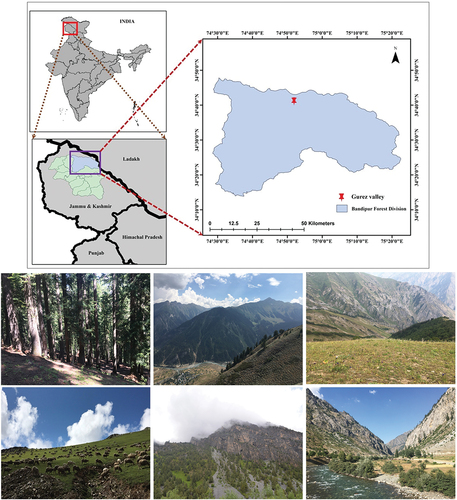Figures & data
Figure 2. Differentiation of species by family across three understory herb associations in Gurez valley of Kashmir Himalayan region.
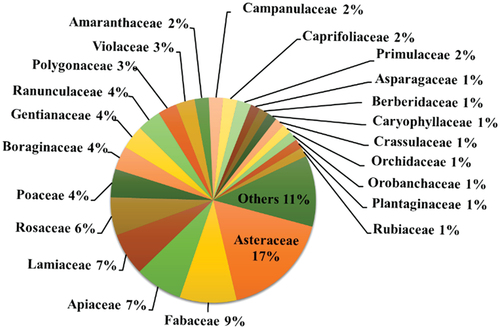
Table 1. Descriptive statistics (mean ± SE) of community attributes across three understory herb communities in Gurez valley of Kashmir Himalayan region.
Figure 3. Classification (TWINSPAN) of understory herb vegetation presenting three communities structured in Gurez valley of Kashmir Himalayan region. The numerical numbers within square at each node represent the division number. N is the number of plots. Communities are named based on the indicator species.
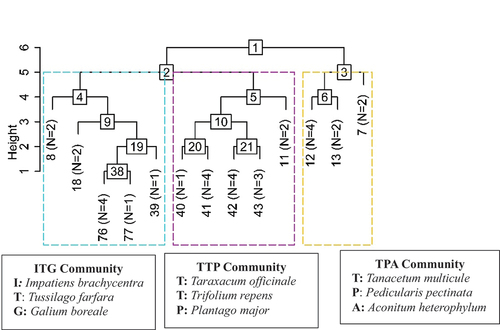
Figure 4. Distribution of endemic and IUCN threatened species across three understory herb communities in Gurez valley of Kashmir Himalayan region. The number on the scale represents the species abundance. Letter codes represent the species as: Aco_het: Aconitum heterophyllum; Del_ves: Delphinium vestitum; Geu_roy: Geum roylei; Sau_cos: Saussurea costus; Bup_lon: Bupleurum longicaule; Dip_ine: Dipsacus inermis; Gen_car: Gentiana carinata; Lom_cae: Lomatogonium caeruleum; Oxy_cae: Oxytropis cachemiriana; Ped_pec: Pedicularis pectinata; Rhe_web: Rheum webbianum; Sel_veg: Selinum vaginatum; Lac_dol: Lactuca dolichophylla; Pri_mac: Primula macrophylla; Sal_mor: Salvia moorcroftiana; and Sca_spe: Scabiosa speciosa.
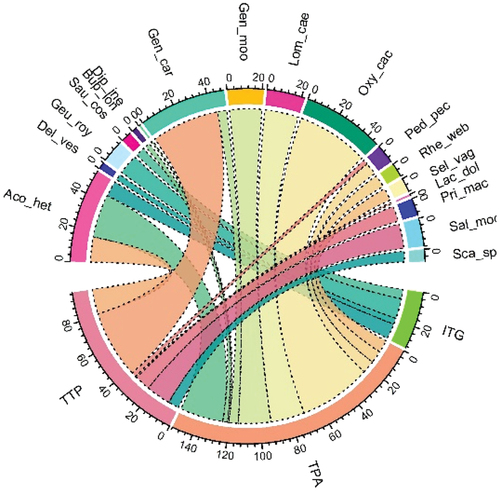
Figure 5. Two-dimensional ordination plot of the distance matrices from a NMDS (non-metric multidimensional scaling; stress = 0.19) segregating 32 sampling sites representing 131 plant species into three plant communities (ITG: Impatiens brachycentra–Tussilago farfara–Galium boreale; TPA: Taraxacum officinale–Trifolium repens–Plantago major; TTP: Tanacetum multicule–Pedicularis pectinata–Aconitum heterophylum) in Gurez valley of Kashmir Himalayan region. Refer to the supplementary (Table S1) for scientific names of the species letter codes.
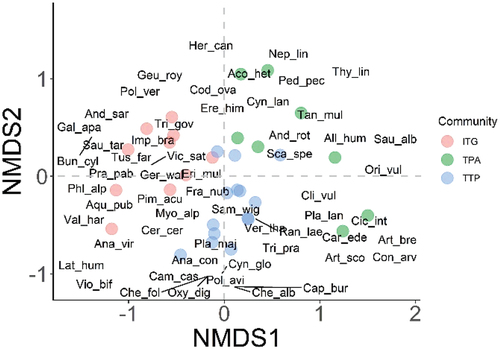
Figure 6. Statistical variations in community attributes in Gurez valley of Kashmir Himalayan region.
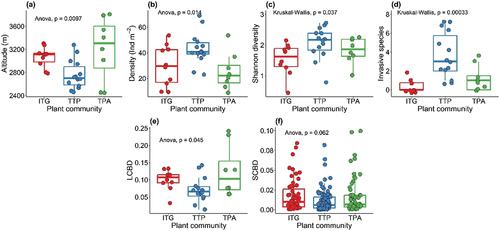
Figure 7. Coverage-based rarefaction and extrapolation curves with 95% confidence intervals comparing plant species richness across three understory herb communities (ITG, TPA, and TTP) in Gurez valley of Kashmir Himalayan region. Note solid lines represent the reference samples, and the extrapolation part is almost invisible.
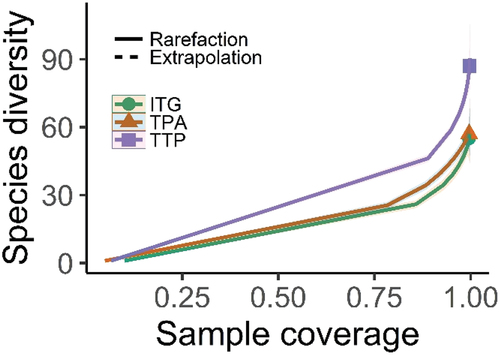
Figure 8. Species distributions on topographic, climatic (PPT: precipitation; MI: moisture index), and disturbance (IA: invasive aliens) gradients across the three understory plant communities in Gurez valley of Kashmir Himalayan region. Green circles represent the sampled plots. The six-letter code represents the name of the plant species, with first three letters corresponding to the genus name and the subsequent letters being initials of species name. Refer to the supplementary (Table S1) for scientific names of the species letter codes.

Table 2. Summary of canonical correspondence analysis (CCA).
Supplemental Material
Download (21.5 KB)Data availability statement
The data is available with the corresponding author and is not available on any online web platform.

